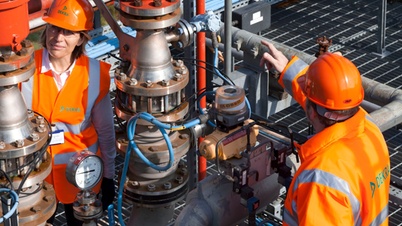
As businesses strive to increase their efficiency and productivity, hazardous areas have become a common occurrence in various industries. These hazardous areas pose significant risks to both employees and equipment, making it essential to conduct regular audits to ensure the safety of everyone involved.
In this guest post, we will discuss the importance of hazardous area auditing and how it can be beneficial to your organization.
What is Hazardous Area Auditing?
Hazardous area auditors is a thorough examination of the hazardous areas within a workplace, with the aim of identifying potential hazards and recommending measures to mitigate them. The process involves an expert in hazardous areas evaluating the site and producing a report outlining any risks and compliance gaps. The report serves as a guide to the necessary steps to eliminate or reduce the hazards and ensure compliance with relevant regulations.
The Importance of Hazardous Area Auditing
Hazardous area auditing is essential for several reasons, including:
Ensuring Employee Safety
The primary objective of hazardous area auditing is to ensure the safety of employees working in hazardous areas. Conducting regular audits helps to identify potential hazards, which can then be addressed promptly to reduce the risk of injuries or fatalities.
Compliance with Regulations
Hazardous area auditing helps to ensure that an organization complies with regulations and standards governing hazardous areas. Non-compliance can lead to hefty fines, legal battles, and reputational damage.
Protection of Equipment
Hazardous areas are not only a risk to employees but also to equipment. The equipment used in hazardous areas is often expensive and critical to operations. Hazardous area auditing can identify any potential risks to equipment and recommend solutions to prevent damage or failure.
The Benefits of Hazardous Area Auditing
Reduced Risks
Hazardous area auditing helps to identify potential hazards, allowing organizations to implement safety measures and reduce risks. This, in turn, reduces the likelihood of workplace accidents, injuries, and fatalities.
Increased Efficiency
Hazardous area audits can identify areas that are not being used efficiently, allowing organizations to optimize operations and reduce costs. This can lead to increased productivity and profits.
Cost Savings
By identifying potential hazards and addressing them promptly, organizations can avoid costly downtime, repairs, and replacements. Regular audits also help organizations to stay compliant with regulations, avoiding the hefty fines and legal battles associated with non-compliance.
Conclusion
Hazardous areas pose significant risks to employees, equipment, and the overall operations of an organization. Conducting regular hazardous area audits is essential to identify potential hazards, reduce risks, and ensure compliance with relevant regulations.
Organizations that prioritize hazardous area auditing can enjoy numerous benefits, including increased safety, efficiency, and cost savings.
As a hazardous area auditor, it is crucial to ensure that you have the necessary skills and knowledge to carry out thorough audits. You must also stay up to date with relevant regulations and best practices to provide the best service to your clients.